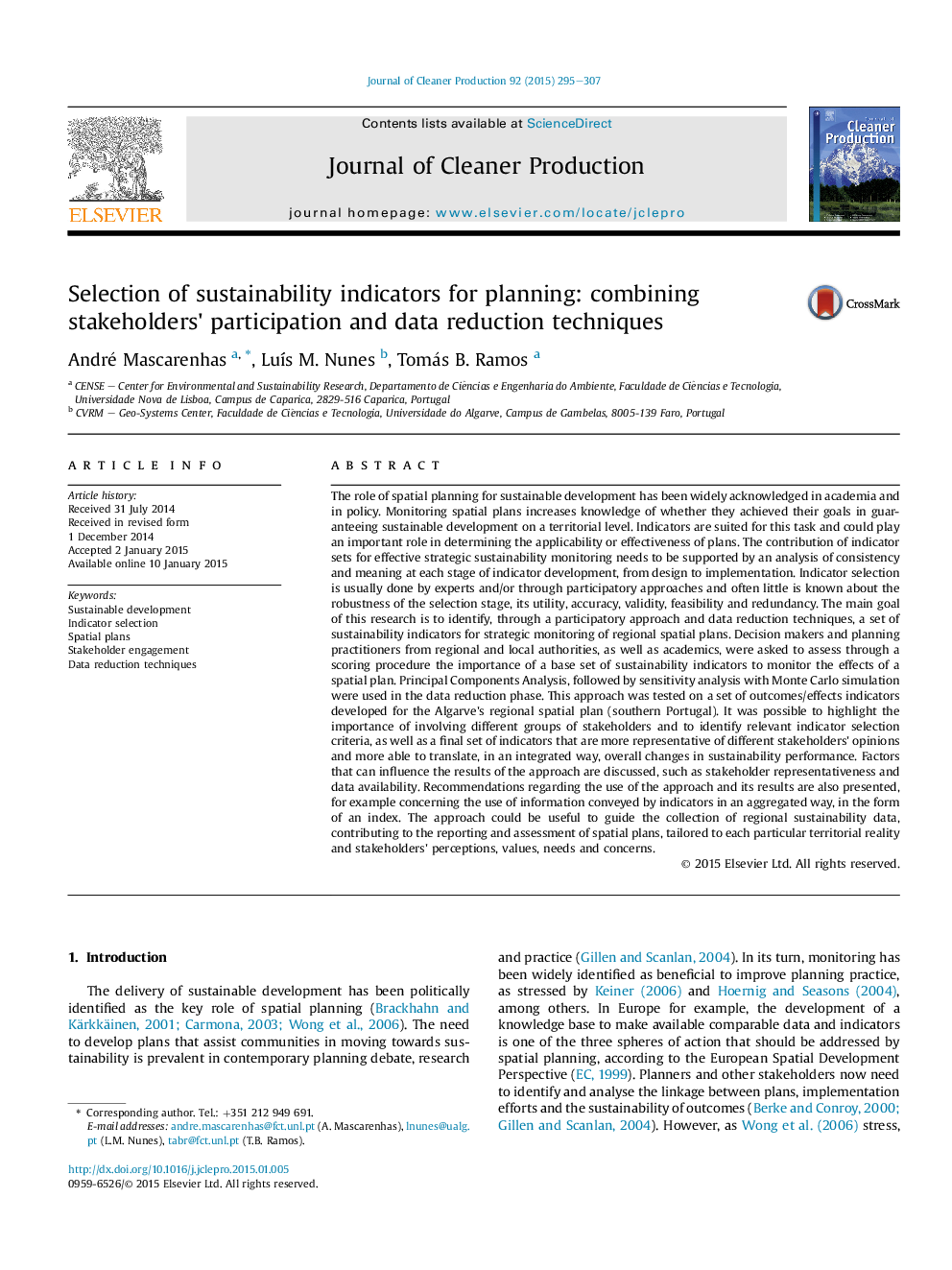| کد مقاله | کد نشریه | سال انتشار | مقاله انگلیسی | نسخه تمام متن |
|---|---|---|---|---|
| 1744646 | 1522154 | 2015 | 13 صفحه PDF | دانلود رایگان |
• The role of sustainability indicators for monitoring spatial plans was analysed.
• Most relevant indicator selection criteria were identified.
• A participatory approach and data reduction techniques were explored.
• The views of different stakeholders were demonstrated.
• A set of more representative and less redundant indicators was obtained.
The role of spatial planning for sustainable development has been widely acknowledged in academia and in policy. Monitoring spatial plans increases knowledge of whether they achieved their goals in guaranteeing sustainable development on a territorial level. Indicators are suited for this task and could play an important role in determining the applicability or effectiveness of plans. The contribution of indicator sets for effective strategic sustainability monitoring needs to be supported by an analysis of consistency and meaning at each stage of indicator development, from design to implementation. Indicator selection is usually done by experts and/or through participatory approaches and often little is known about the robustness of the selection stage, its utility, accuracy, validity, feasibility and redundancy. The main goal of this research is to identify, through a participatory approach and data reduction techniques, a set of sustainability indicators for strategic monitoring of regional spatial plans. Decision makers and planning practitioners from regional and local authorities, as well as academics, were asked to assess through a scoring procedure the importance of a base set of sustainability indicators to monitor the effects of a spatial plan. Principal Components Analysis, followed by sensitivity analysis with Monte Carlo simulation were used in the data reduction phase. This approach was tested on a set of outcomes/effects indicators developed for the Algarve's regional spatial plan (southern Portugal). It was possible to highlight the importance of involving different groups of stakeholders and to identify relevant indicator selection criteria, as well as a final set of indicators that are more representative of different stakeholders' opinions and more able to translate, in an integrated way, overall changes in sustainability performance. Factors that can influence the results of the approach are discussed, such as stakeholder representativeness and data availability. Recommendations regarding the use of the approach and its results are also presented, for example concerning the use of information conveyed by indicators in an aggregated way, in the form of an index. The approach could be useful to guide the collection of regional sustainability data, contributing to the reporting and assessment of spatial plans, tailored to each particular territorial reality and stakeholders' perceptions, values, needs and concerns.
Figure optionsDownload as PowerPoint slide
Journal: Journal of Cleaner Production - Volume 92, 1 April 2015, Pages 295–307
